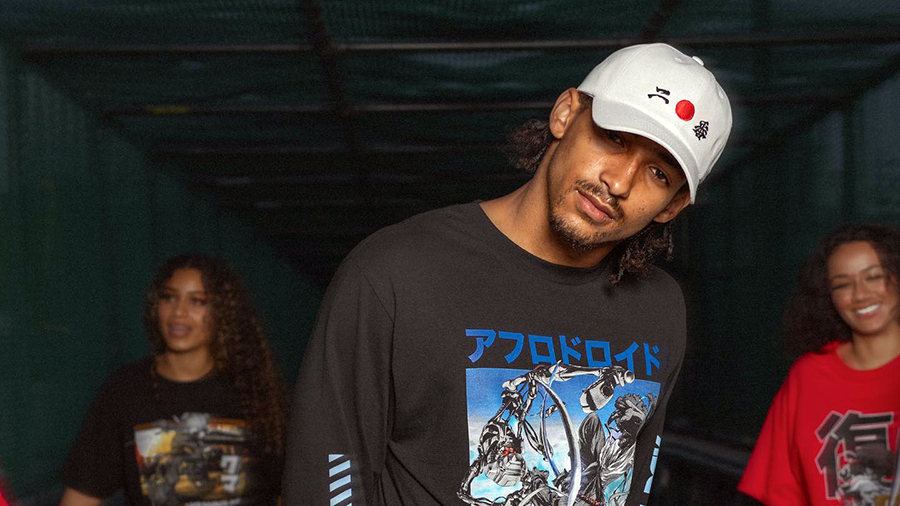Zumiez, Inc. reported better-than-expected Q2 results with sales declines lessening further into the third quarter, including men’s, its largest category, turning positive. The action sports chain predicted another high-single to low-double-digit decline for the third quarter but remains hopeful of continued improvement through holiday selling.
“The operating volume in the U.S. remains challenging with significant multiyear inflationary impacts weighing on consumer discretionary spending, continued competition with spending on travel and experiences, and higher levels of discounting to clear excess inventories,” Rick Brooks, CEO, on a call with analysts. “While this backdrop does not set up well for our full-price selling model, we know from experience that these downcycles are temporary. And our focus is on best positioning the business to capitalize on market conditions as market conditions improve.”
Sales in the quarter ended July 29 fell 11.6 percent to $194.4 million, topping Zumiez’s guidance in the range of $187 million to $192 million. Results improved sequentially versus a decline of 17.1 percent seen in the first quarter. Comparable sales were down 13 percent.
The decrease in sales reflects a 15.9 percent decline in North America sales to $159.7 million. International sales, which consists of Europe and Australia via the Blue Tomato and Fast Times banners, were $34.8 million, up 15.5 percent from last year. On a currency-neutral basis, sales were down 15.7 percent in North America and up 11.8 percent internationally.
By category, all categories were down on a same-store basis with hard goods being the most negative, followed by footwear, accessories, women’s, and men’s. Total dollars per transaction were up for the quarter, driven by an increase in AUR (average unit retail), partially offset by a decrease in units per transaction.
The net loss in the second quarter was $8.5 million, or 44 cents a share, compared to earnings of $3.1 million, or 16 cents, a year ago. Results were better than company guidance calling for a loss between 63 cents to 73 cents.
Gross margins declined 240 basis points to 31.7 percent, primarily driven by lower sales in the quarter, driving deleverage in fixed costs. Store occupancy costs were deleveraged by 210 basis points, product margins decreased 70 basis points, and buying and private label costs were deleveraged 20 basis points. These decreases were partially offset by a decrease of 30 basis points in web shipping costs and 30 basis-point decrease in inventory shrinkage.
SG&A expense climbed 530 basis points to 37.1 percent of sales. The increase reflects a 210-basis point increase due to both deleverage of store wages on lower sales, as well as increases in wage rates that could not be offset by hours reduction; 160 basis-point increase due to deleverage of nonwage store operating costs; 80 basis-point increase in non-store wages, and a 60 basis-point increase in training and events due to event timing.
Zumiez’s operating loss was $10.5 million against an operating profit of $5 million last year.
Brooks is hopeful Zumiez “will emerge from this turbulent period even stronger.” He said the chain plans to be “diligent with our spending” while continuing to invest in its store associates and other growth initiatives. Longer-term focuses include “getting the right product in the right places to serve them as quickly as possible; continuing to work with brands to increase speed and flexibility by increasing margins; investing in innovative approaches to generate human-to-human connections with our customers and engage with them in new ways that enhance the shopping experience.”
Looking ahead, Brooks said the sequential moderation in sales trend in Q2 has continued in the third quarter as the chain moves into the back-to-school season and sees higher volumes.
Through Labor Day, third quarter-to-date sales were down 7.7 percent compared with down 11.6 percent in the second quarter and 17.1 percent in the first quarter. Brooks said, “Given that back-to-school has historically been a good indicator for holiday demand, we’re optimistic about continued improvement in the business through the peak selling periods this coming holiday season.”
Total third quarter-to-date comps for the 37 days ending September 4 were down 8.6 percent from the comparable period in the prior year.
For the third quarter, sales are expected in the range of $211 to $216 million, down at the midpoint by 10.1 percent against $237.6 million a year ago. Consolidated operating margins are expected to be between negative 1.5 percent and negative 2.5 percent (positive 4.4 percent) resulting in a loss per share between 15 cents to 25 cents, against a profit of 36 cents a year ago.
Asked about the guidance representing a deceleration from the 7.7 percent decline seen quarter-to-date, Chris Work, CFO, noted that August’s sales were “choppy” with sales “a little bit softer” in the latter part of the month. He also noted that the guidance reflects the traditional softening that happens at the latter part of the BTS selling season. Work said, “We’re sort of buffering the current run rate for that under the assumption of just kind of where the market’s at. And, you know, hopefully, as we try to do, it’s a guidance that we can beat.”
Photo courtesy Zumiez
















